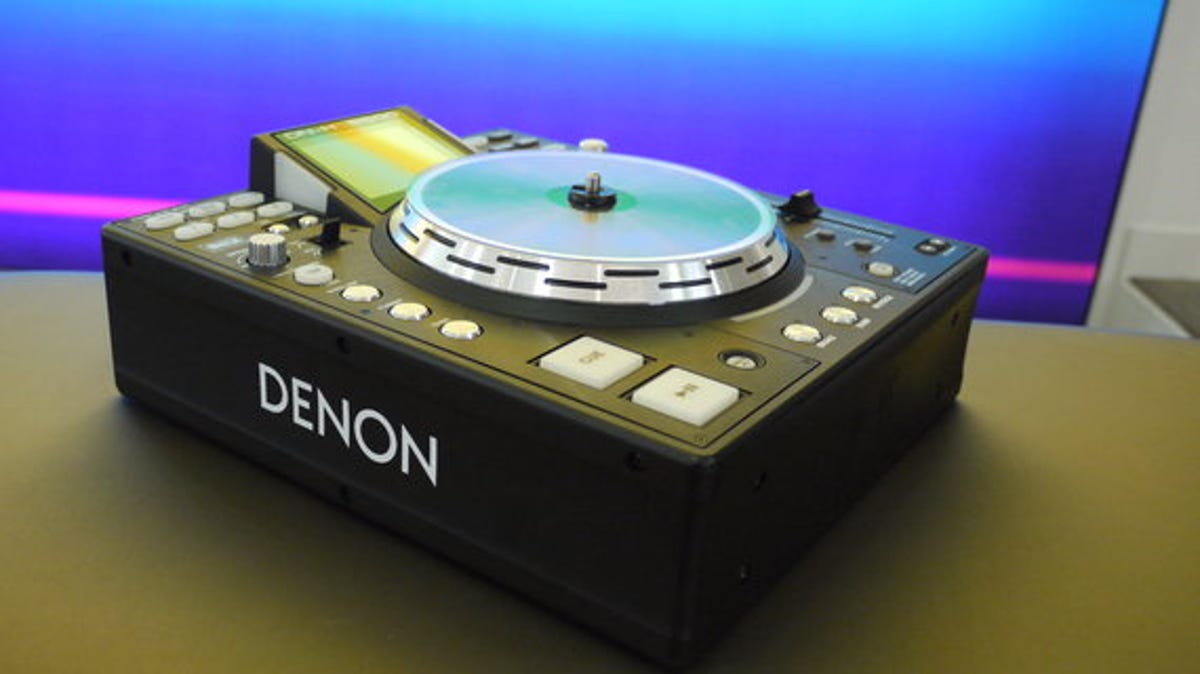
We've said before that DJing is expensive. Not only do you have to buy a stack of music to keep the crowds happy, but you also need two of everything. Denon, however, thinks it can help reduce the cost of equipment and leave you with extra money to buy music.
The DN-HS5500 is a DJ deck aimed at the digital generation, comprising two decks in one. It works using a 'layer' system. When you switch between the two layers, you switch which deck you're controlling.
There are three configuration options. You can either opt for one with a built-in CD drive, a built-in hard drive or go for a plain deck. We used the latter model, so we got music onto it using a memory card.
The brilliance of the DN-HS5500 is that the platter on the deck actually moves. While such CD or MIDI controllers generally have a control surface, it's usually static.
We really liked the way the DN-HS5500 works. The moving platter gives you a more tactile way to interact with your music. Purists will argue that the best and most tactile way of interacting with music is to use vinyl. That's almost certainly true but, in this day and age, so much music is digital that using vinyl is really for people who have existing collections.
Of course, this being 2009, you can also connect the DN-HS5500 to a PC and use its MIDI interface to control a piece of DJ software. We used Traktor 3. Using the two in collaboration is incredibly simple -- just connect with a USB cable, and download the relevant template file for Traktor from the Denon site. There are other software packages that work just as well with the DN-HS5500 too.
The only downside of using Traktor is that you lose the spinning platter when the DN-HS5500 is connected in USB MIDI mode. If you want to get around that, then using Traktor with the Audio 8 DJ interface might be a decent solution, even if it is a costly nightmare in terms of cabling and connectivity.
The main concern we have with the DN-HS5500 is that the platter feels like it won't survive much abuse. That said, if you're using it at home, it's not likely to be at risk. If you want to lug your DJ deck to a new club every weekend, you might want something a bit sturdier.